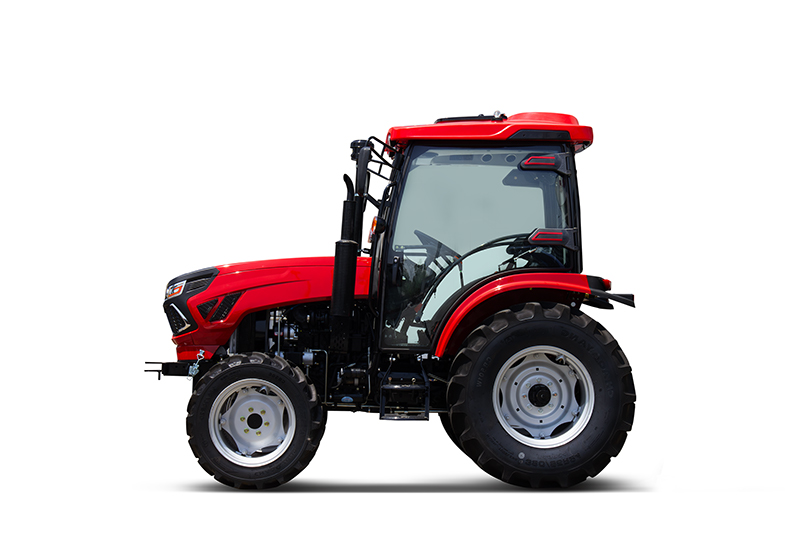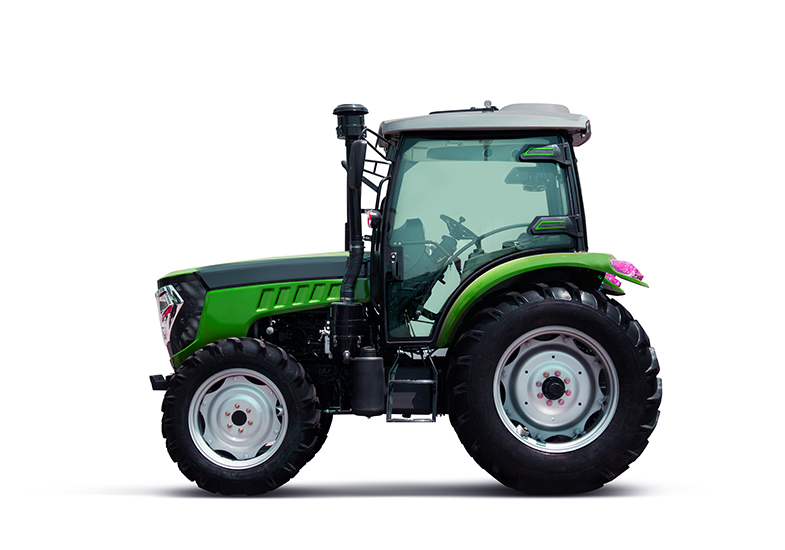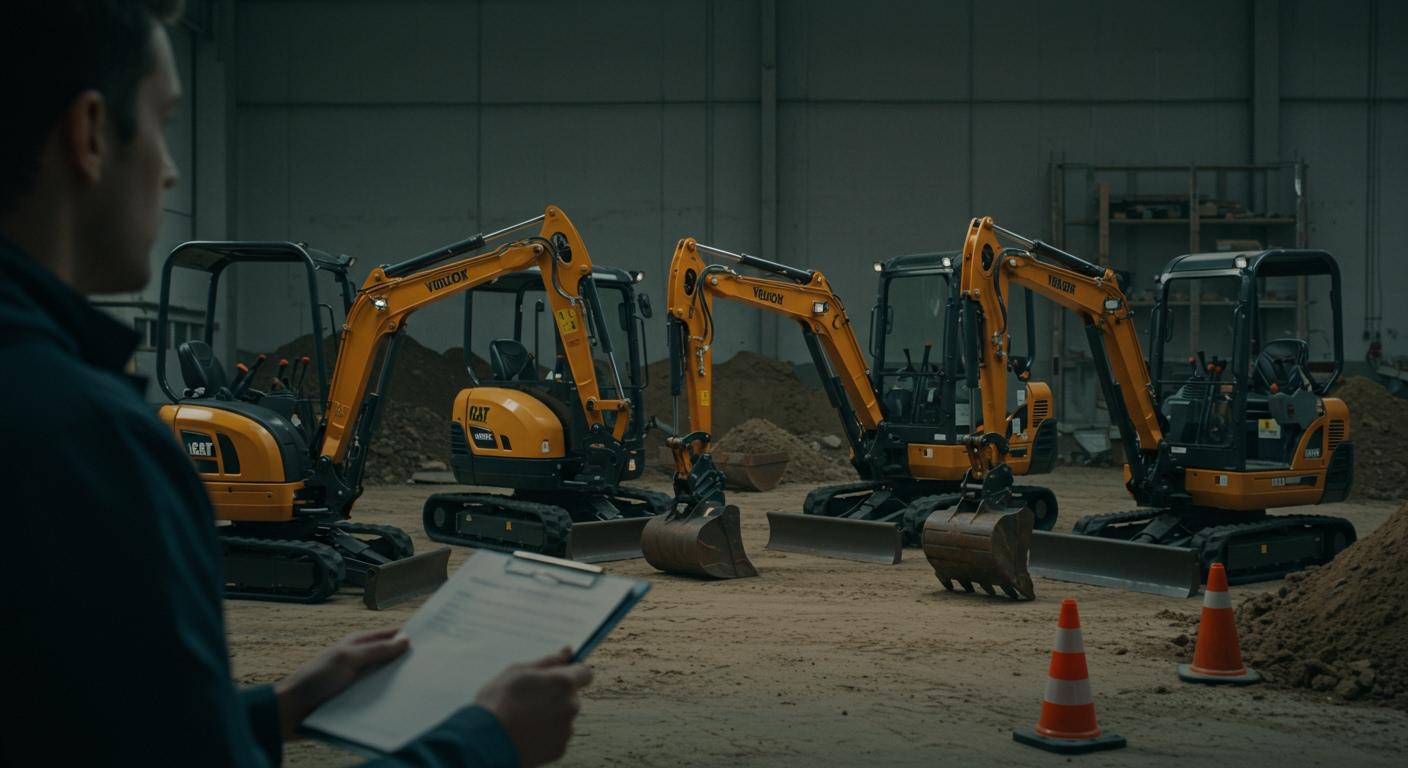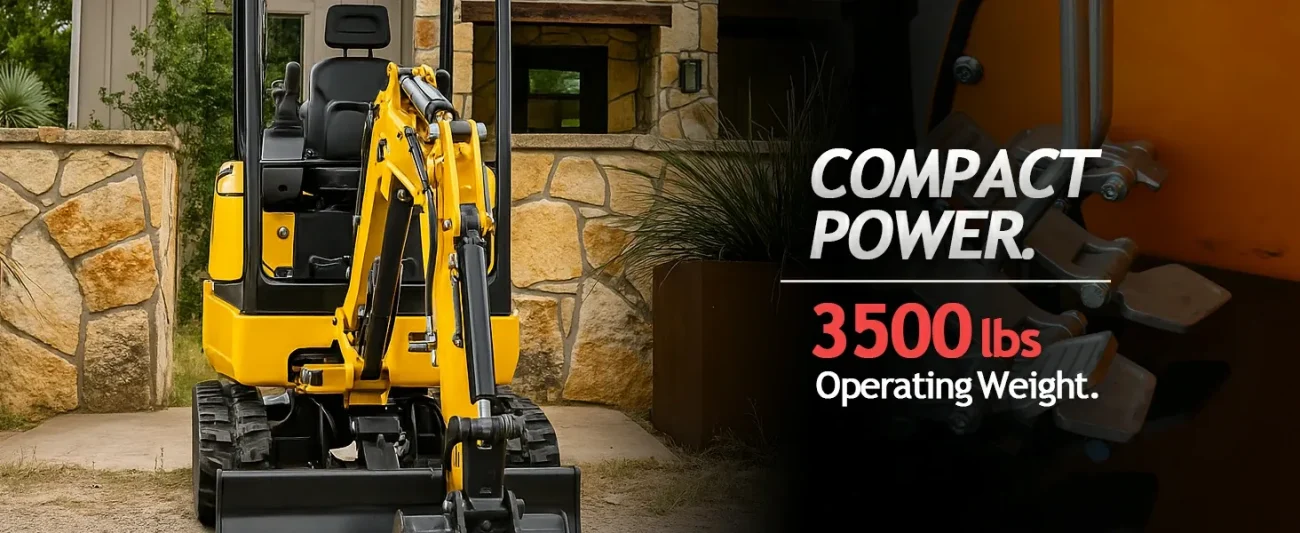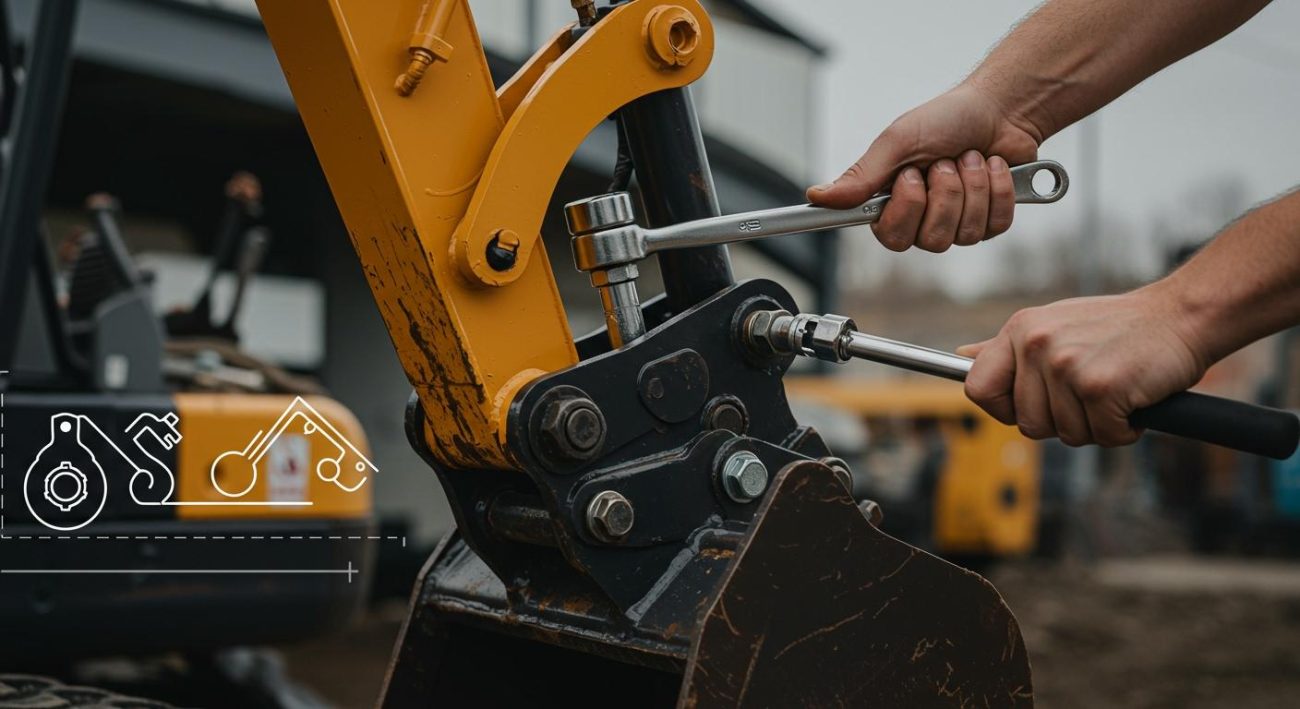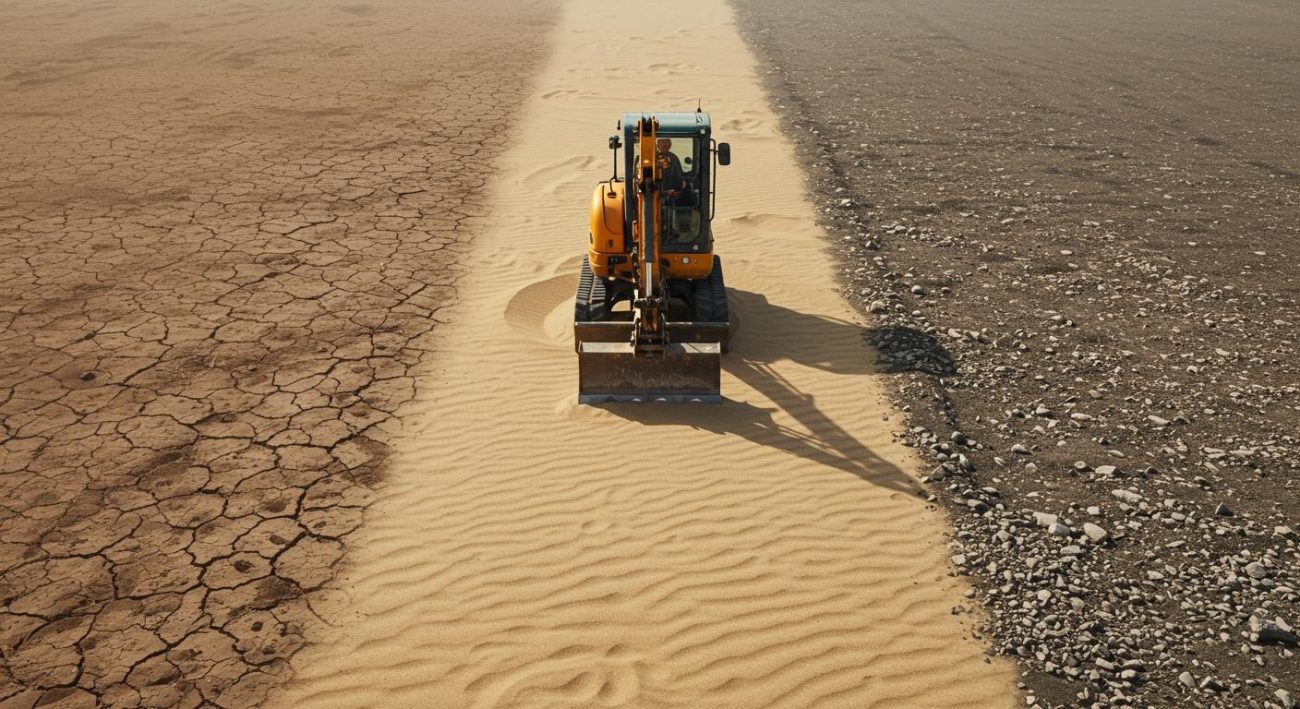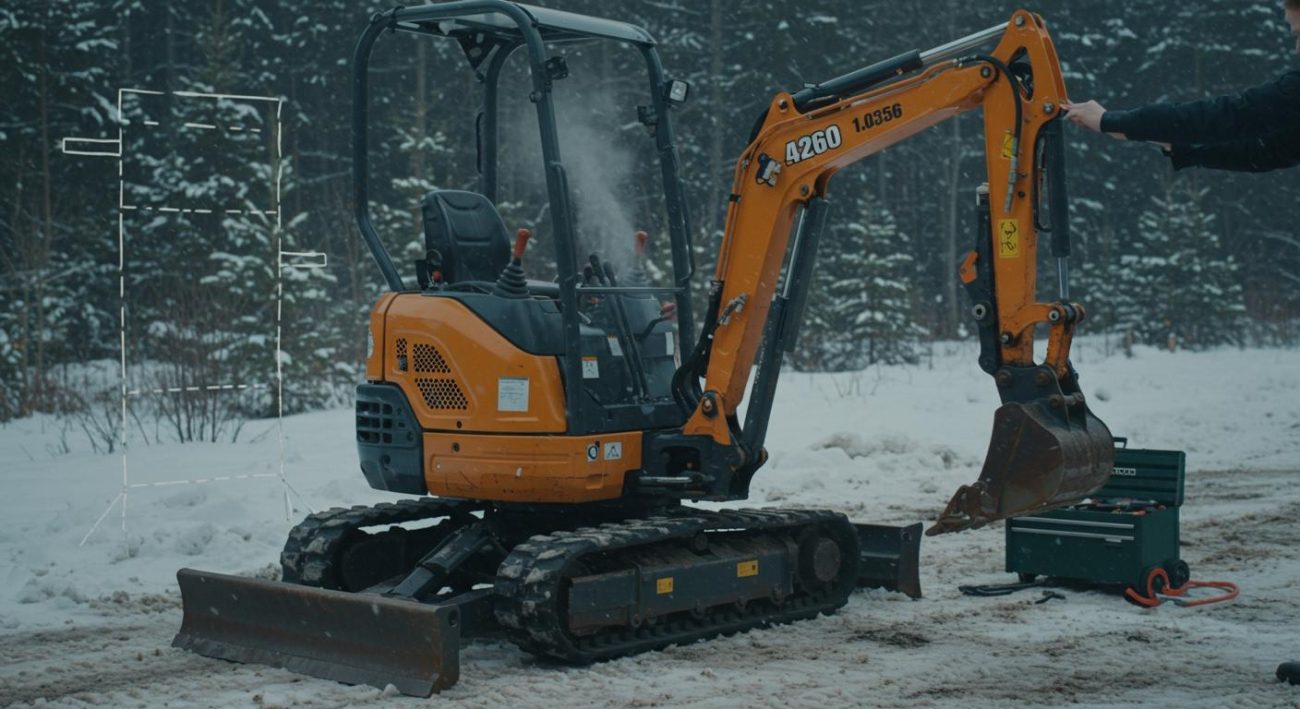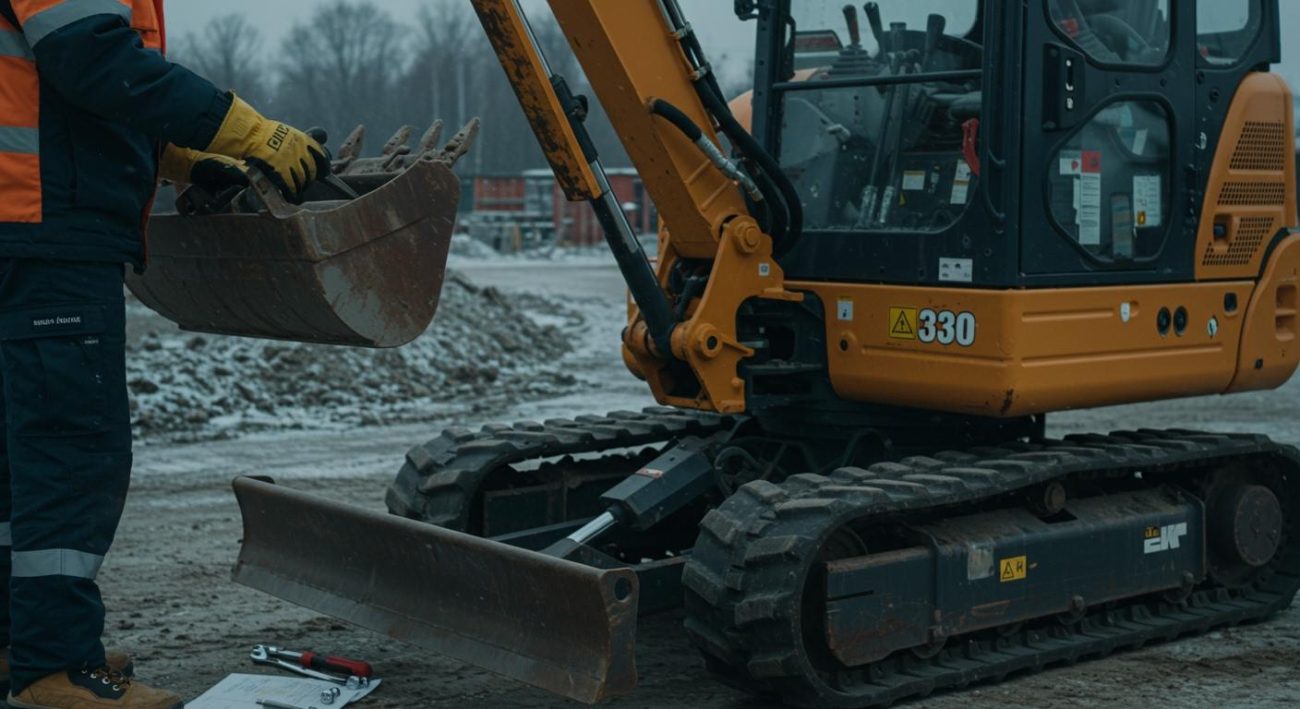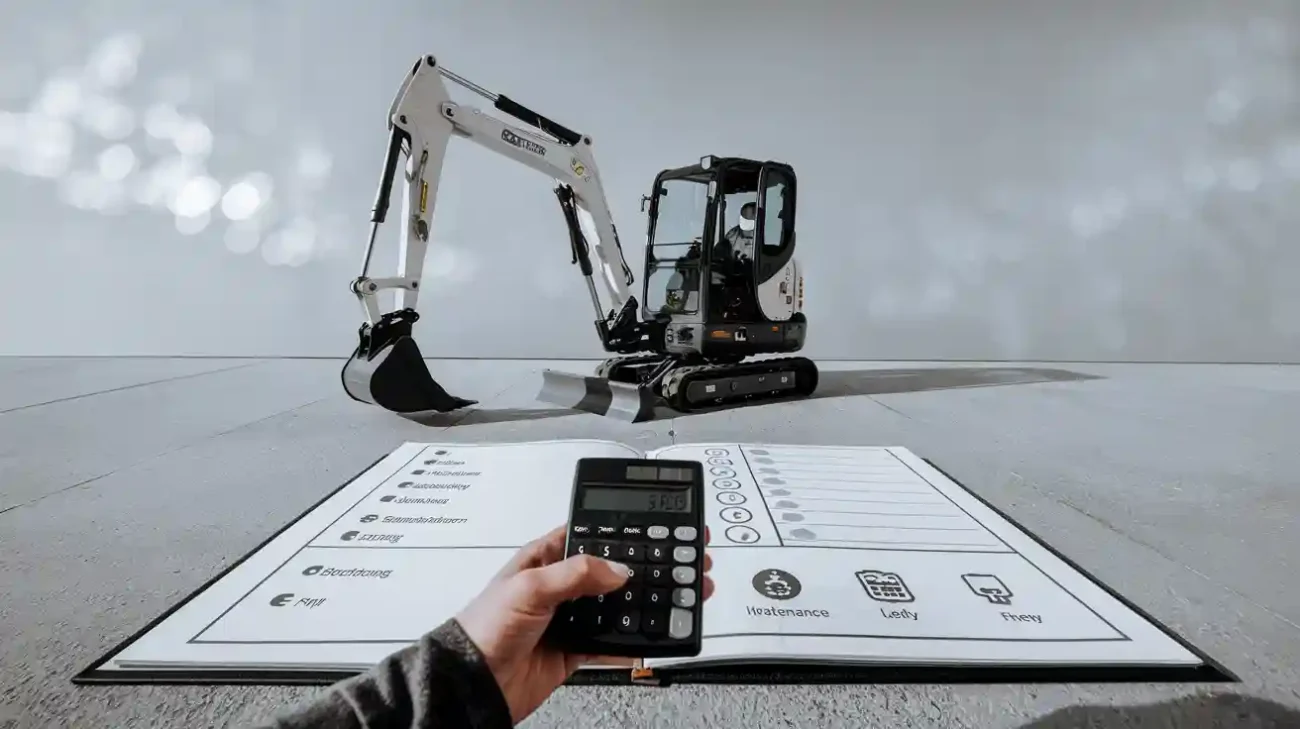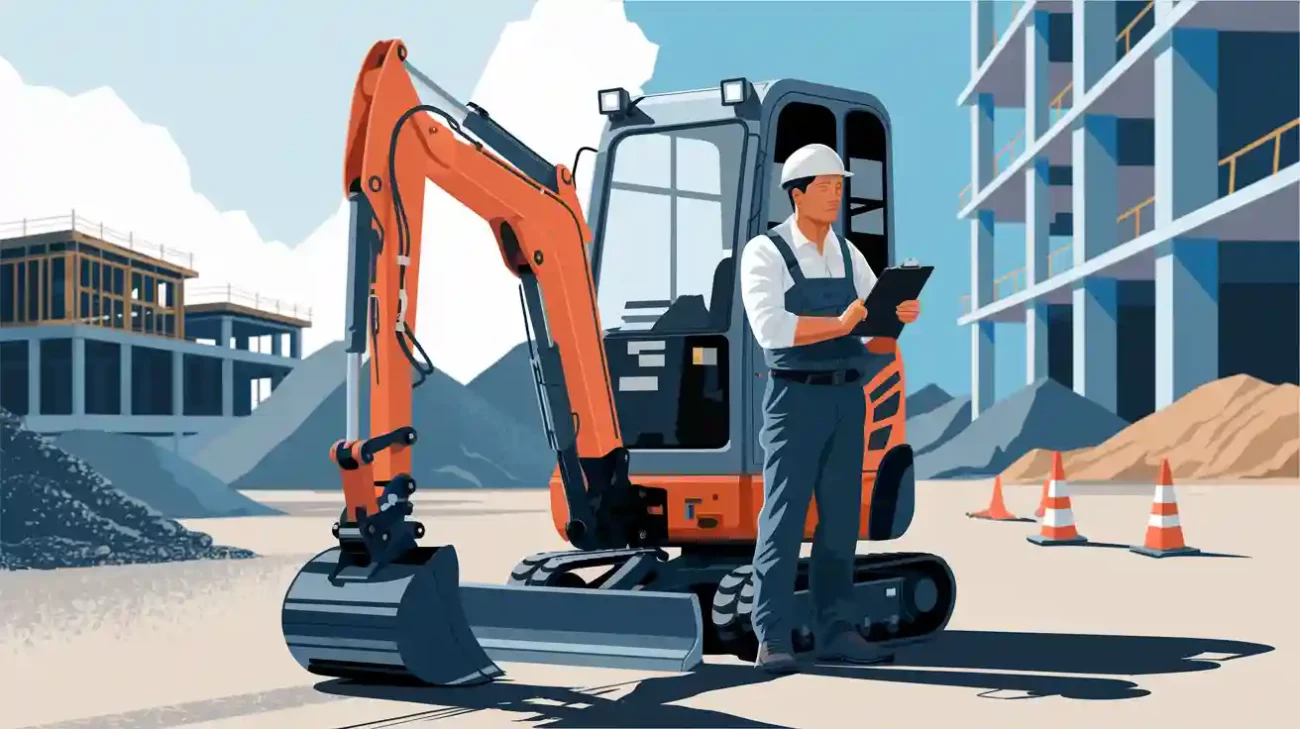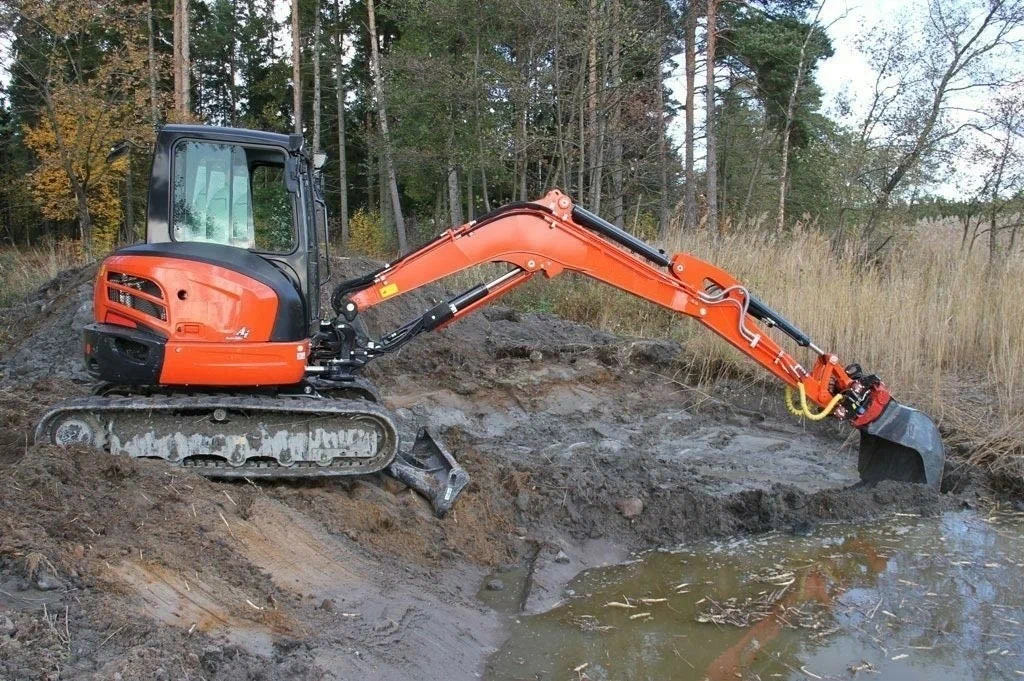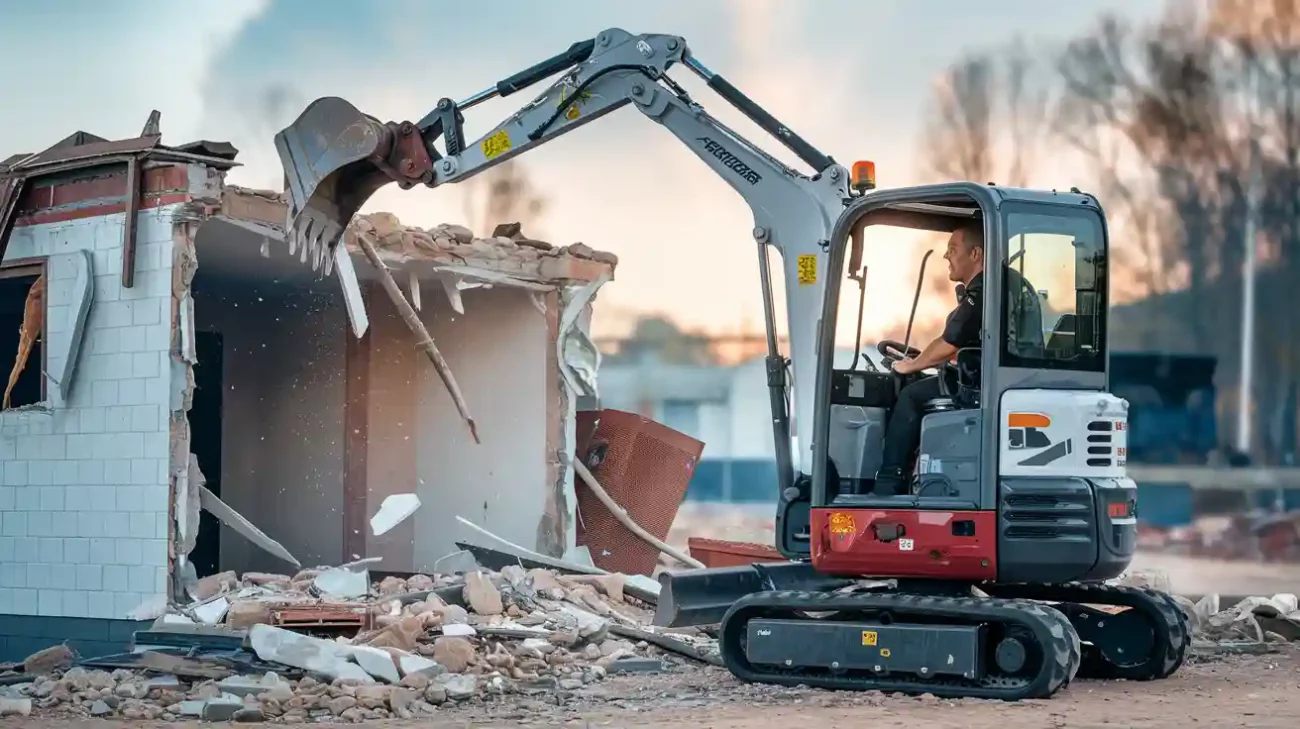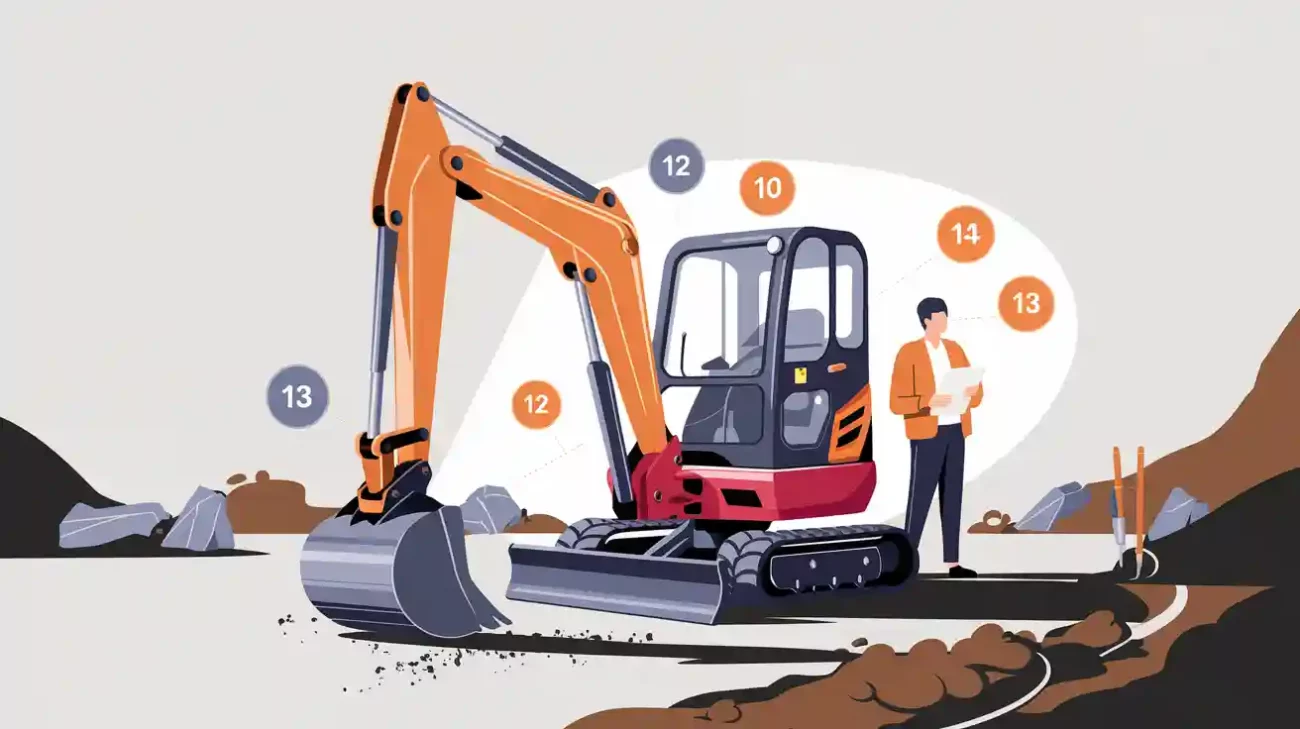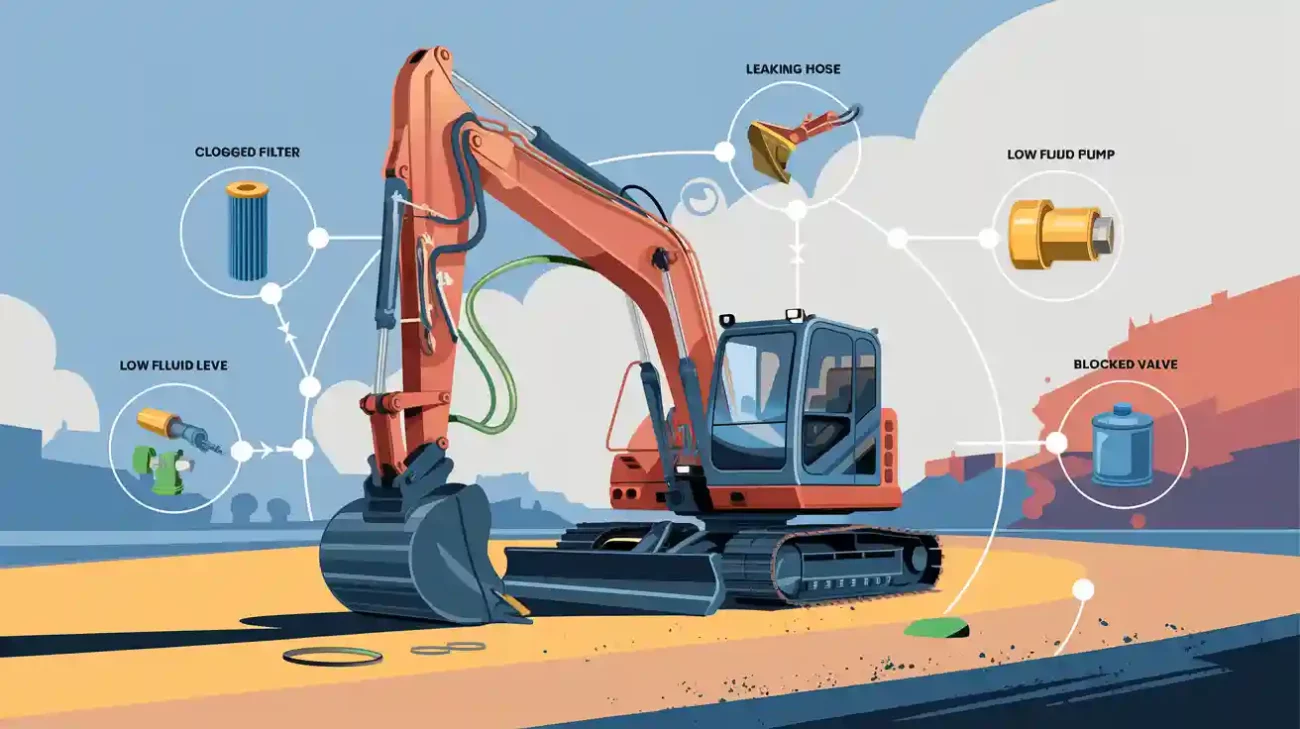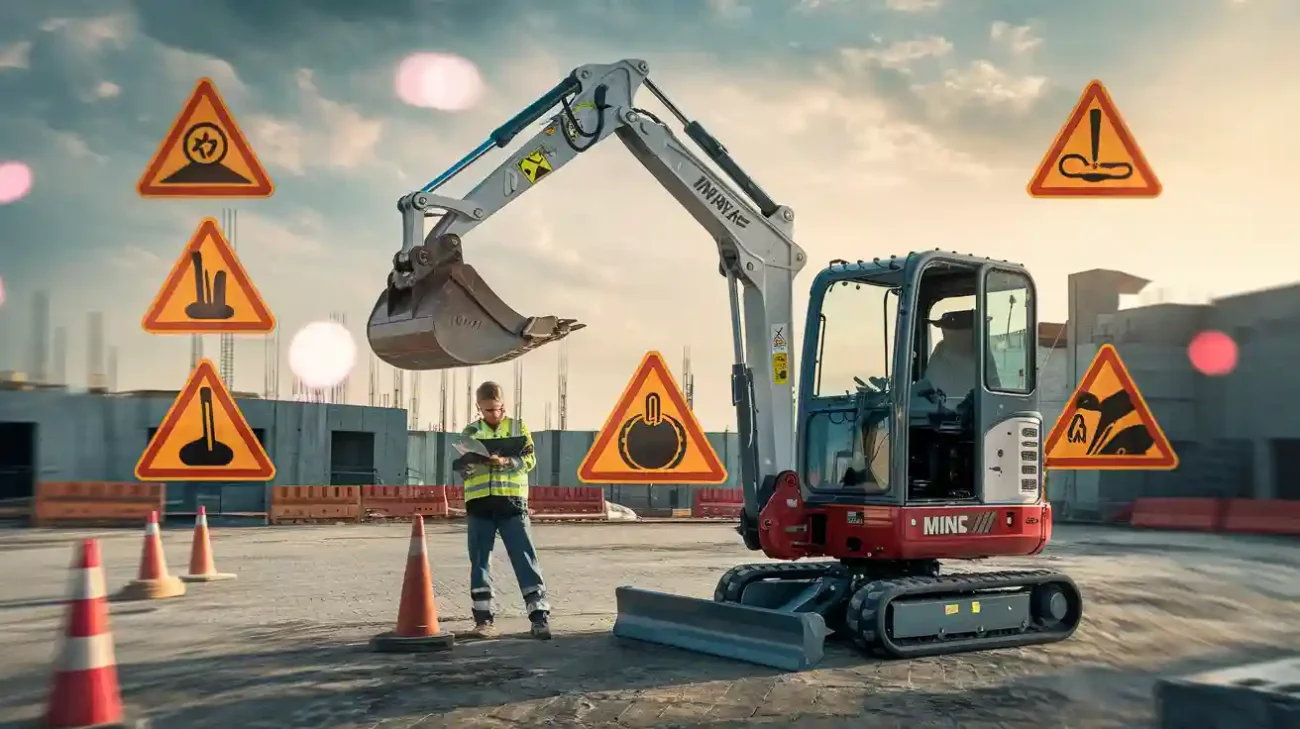Choosing a mini excavator that matches your job helps you work faster and saves money. The right mini excavators fit into small spaces, cost less to use, and do not damage the ground much. You can move the mini excavator easily, perform many jobs, and utilize simple controls.
Key Takeaways
Pick a mini excavator that fits your project and site. Think about how deep you need to dig, how much weight it can lift, and what kind of soil is there. This helps you work better and faster.
Plan your budget by looking at more than just the price. Remember to add fuel and maintenance costs too. A strong machine can help you save money over time.
Use attachments to make your mini excavator do more jobs. This lets you do many tasks with one machine. It helps you work faster and need less extra equipment.
Mini Excavators: Key Factors for Selection
Project Needs and Site Conditions
Pick a mini excavator that fits your job. Look at the area you need to dig. Check how deep you must dig. Think about what materials you will move. It is important to move easily in small spaces. Weight capacity helps you lift heavy things. Mini excavators are good for small places. They can do many different jobs.
Site conditions matter too. The type of soil changes how your excavator works. Sand is easy to dig and lets you work fast. Clay is sticky and needs strong buckets. Silt is good for digging trenches and keeps the ground steady.
Soil Type | Characteristics | Impact on Excavation |
|---|---|---|
Sand | Drains water well, easy to dig | Good for fast digging jobs |
Silt | Drains water okay, holds moisture | Works for trench jobs that need steady ground |
Clay | Thick, sticky, hard to dig | Best for jobs that need no leaks, like landfills |
Choose a mini excavator brand with the right engine and features for your soil and space. |
Budget and Cost Considerations
Pick a mini excavator that matches your budget. Prices are different for each model.
Brands offer mini excavators at many prices. Think about costs like fuel and repairs. Mini excavators use 1-2 gallons of fuel each hour. They cost less to fix than bigger machines. A strong engine saves you money over time. Durable machines break less and need fewer repairs.
Attachments and Versatility
Attachments help mini excavators do more jobs. Hydraulic thumbs lift odd shapes. Auger drills make holes. Buckets move dirt and rocks. Couplers let you change tools fast. Hammers break hard surfaces. Grapples grab heavy things.
Hydraulic Thumbs
Auger Drills
Couplers
Hammers
Grapples
Buckets
Mulchers
Rakes
Rippers
Trenchers
Attachments let you use one machine for many tasks. This helps you work faster and better. You finish jobs quickly and do not need extra equipment. Brands with many attachments give you more choices. A strong engine and good features help you every day.
Mini Excavator Models: DeepKron and Other Brands
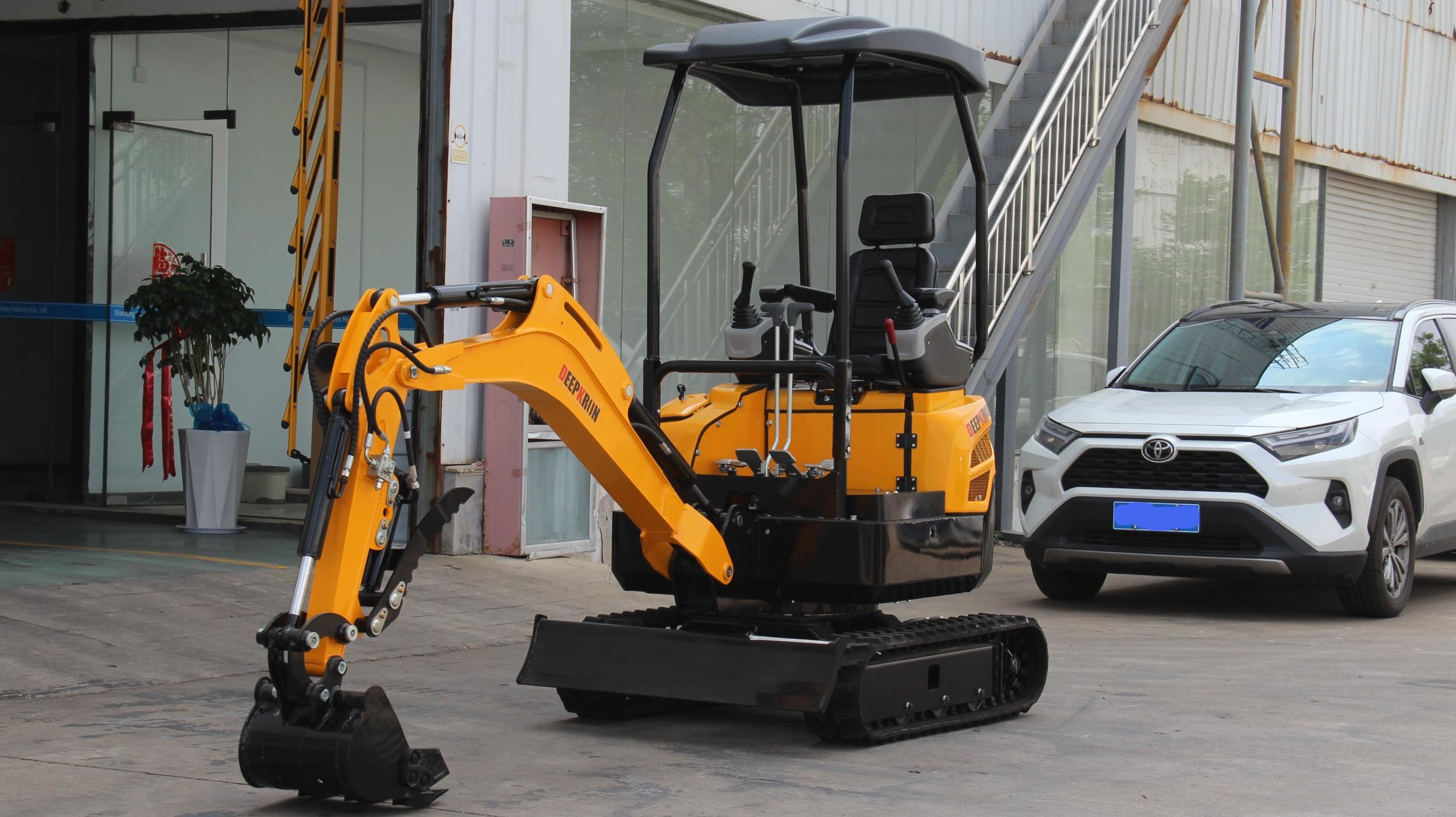
DeepKron DK16P, DK12P, DK18DA Overview
When you pick a mini excavator, you want one that fits your job. DeepKron has three models: DK16P, DK12P, and DK18DA. Each model has special features and benefits.
DK16P is good for small city spaces. It is compact and easy to use. The hydraulics are strong. The engine uses gasoline and gives 13.5 horsepower. It can dig up to 64.96 inches deep. You can use many attachments with it. This helps you do different jobs with one machine.
DK12P works best for small jobs and tight spots. It is light and simple to move. The engine also uses gasoline and gives 13.5 horsepower. It can dig up to 56.54 inches. The DK12P is great for landscaping and light building work. You can add a hydraulic thumb or cab enclosure for more comfort or control.
DK18DA gives you extra power and reach. The diesel engine gives 15 horsepower. It can dig up to 74.81 inches. This model is good for bigger jobs that need deeper digging. The DK18DA has a swing boom and hydraulic thumb. This makes it flexible for many tasks.
Here is a quick look at the main features and specs:
Feature | DK16P | DK12P | DK18DA |
|---|---|---|---|
Operating Weight | 3500 lb (1600 kg) | 2645 lb (1200 kg) | |
Max. Dig Depth | 64.96 in (1650 mm) | 56.54 in (1436 mm) | 74.81 in (1900 mm) |
Reach at Ground Level | 98.03 in (2490 mm) | 89.88 in (2283 mm) | 114.17 in (2900 mm) |
Width with Blade | 38.58 in (980 mm) | 36.77 in (934 mm) | 36.61 in (930 mm) |
Engine Manufacturer | Briggs & Stratton | Briggs & Stratton | Kubota |
Horsepower | 13.5 hp (9.9 kW) | 13.5 hp (9.9 kW) | 15 hp (11.2 kW) |
Engine Type | Gasoline | Gasoline | Diesel |
Travel Speed | 1.37 mph (2.2 km/hr.) | 1.37 mph (2.2 km/hr.) | 1.55 mph (2.5 km/hr.) |
Hydraulic Thumb | Standard | Optional | Standard |
Dozer Blade | Standard | Standard | Standard |
Cab Enclosure A/C | Optional | Optional | Optional |
Tip: Pick DK16P for city jobs, DK12P for small spaces, and DK18DA for deep digging and more power.
Mini Excavator Comparison: Features & Specs
You need to compare mini excavators to find the best one. Look at engine power, width, fuel use, and special features. DeepKron models have strong engines and save fuel. For example, DK18DA uses a Kubota diesel engine with 15 horsepower. DK16P and DK12P use Briggs & Stratton gasoline engines with 13.5 horsepower.
Let’s see how DeepKron compares to other brands:
Model | Engine Power (HP) | Body Width (in) | Fuel Efficiency/Environmental Features |
|---|---|---|---|
DeepKron DK20 | 43 | High fuel efficiency, low emissions, low noise | |
Bobcat E20 | 13.9 | 39 | No specific fuel efficiency or environmental ratings |
Kubota U17 | 16.1 | 39 | No specific fuel efficiency or environmental ratings |
DeepKron models save fuel and make less noise. You spend less money and work longer before refueling. The engines in DeepKron excavators are reliable and work well.
Other brands have special features too. Komatsu uses an iNDr Cooling System and easy controls. Kubota gives zero tail swing and a three-pump hydraulic system. New Holland has Tier 4 engines and many options. Yanmar offers ECO mode and remote monitoring.
Brand | Key Features | Engine Output | Fuel Efficiency | Tail Swing Design |
|---|---|---|---|---|
Komatsu | iNDr Cooling, easy controls, auto slow down, LCD screen | 3.5 – 10 tons | Up to 5% savings | Standard/canopy |
Kubota | Zero tail swing, 3 pump system, diesel engine, easy to move | 1 – 8 tons | High efficiency | Zero tail swing |
New Holland | Tier 4 engines, many options, short/zero tail swing | 1.7 – 6.0 tons | Excellent | Conventional radius |
Yanmar | ECO mode, remote monitoring, quick tool change | 1 – 11 tons | Reliable | Many choices |
Note: DeepKron is known for saving fuel, strong engines, and many attachments. You can trust these machines for daily work and tough jobs.
Mini Excavator Brands: Market Overview
You have many choices for mini excavator brands. Some brands are popular all over the world. These include Bobcat, Caterpillar, Komatsu, Volvo, and Kubota. Other good brands are Hitachi, Deere, Hyundai, and JCB. Each brand has its own strengths in features, engine technology, and efficiency.
Brand | Market Share Region |
|---|---|
Bobcat Company | Global |
Caterpillar, Inc. | Global |
Komatsu, Ltd. | Global |
Volvo Construction Equipment | Global |
Kubota | Global |
Hitachi, Ltd. | Global |
Deere & Company | Global |
JCB | Global |
Hyundai Construction Equipment | Global |
Many brands get high scores for being tough and making customers happy. Bobcat is known for strong machines and lots of attachments. Caterpillar is famous for being dependable and having new technology. Komatsu and Kubota focus on saving fuel and easy controls. Hitachi is liked for precise work and modern hydraulics.
DeepKron keeps growing in this market. You get new features, strong engines, and high efficiency. DeepKron mini excavators are reliable and last a long time. The brand helps you finish jobs faster. You can count on DeepKron for good performance and durability on every project.
Best Mini Excavator Features for Your Job
Performance and Efficiency
You want your excavator to work well every time. The right engine size helps you dig deeper. More power lets you lift heavier things. You finish jobs faster with a strong engine. When you look at mini excavators, check the important numbers. Look at engine power, dig depth, and fuel capacity. These numbers tell you how the machine will do your job.
Metric | 3 Ton Mini Excavator | 4 Ton Mini Excavator | 5 Ton Mini Excavator | 6 Ton Mini Excavator |
|---|---|---|---|---|
Engine Power (HP) | 24 | 35 | 45 | 55 |
Max Dig Depth (ft) | 10 | 12 | 14 | 16 |
Operating Weight (lbs) | 6,600 | 8,800 | 11,000 | 13,200 |
Fuel Capacity (gal) | 12 | 15 | 18 | 20 |
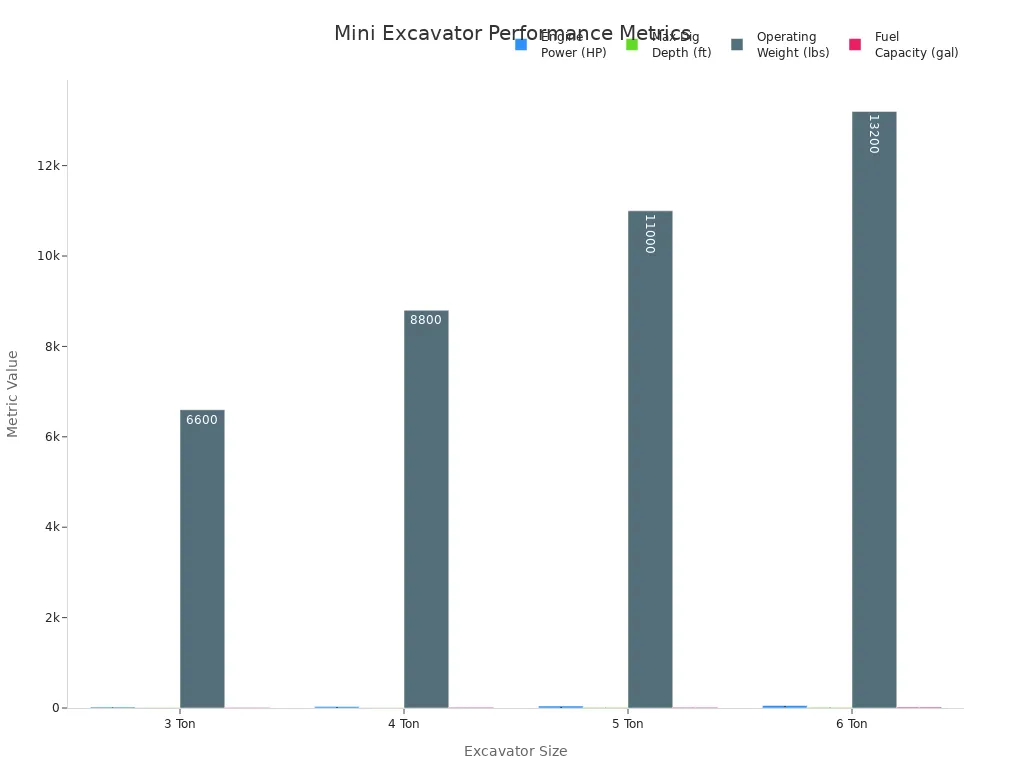
Fuel efficiency is important for saving money. Some brands use less fuel each hour. This helps you spend less over time. Komatsu and Volvo models often use 8-15 gallons per hour. This helps you keep costs low and work better.
Operator Comfort and Controls
Operator comfort helps you work longer and better. New mini excavators have features to keep you comfortable. You get climate control and air-suspension seats. Controls can be adjusted to fit you. These features help you feel less tired. You stay focused during long work days.
Ergonomic Feature | Description |
|---|---|
Climate Control | Keeps you cool or warm and prevents fogging. |
Air-Suspension Seat | Absorbs shocks and reduces discomfort. |
Heated and Cooled Seats | Adds comfort in extreme weather. |
Ergonomic Joysticks | Low-effort controls for easy operation. |
Spacious Cab Layout | Lets you move freely and maintain good posture. |
Adjustable Seats | Helps you find the best position for your body. |
Good cab design means less pain in your back and shoulders. You stay happy and get more done, even on long days.
Advanced controls make work safer and easier. Features like proximity detection help you avoid accidents. Blind spot monitoring and tip-over protection keep you safe. You can work with more confidence.
Attachment Options
Mini excavator attachments make your machine do many jobs. You can switch from digging to lifting or breaking concrete quickly. Popular attachments include dirt buckets, augers, pallet forks, angle tilt buckets, hydraulic thumbs, and breakers. A hydraulic quick coupler lets you change tools fast. This keeps your project moving.
Dirt bucket: Digs trenches and shapes land.
Auger: Drills holes for posts or trees.
Pallet fork: Moves heavy materials.
Angle tilt bucket: Works on slopes.
Hydraulic thumb: Grabs and sorts debris.
Hydraulic breaker: Breaks up concrete and rocks.
The swivel coupler system lets you change attachments from inside the cab. This feature helps you work faster and safer. You finish jobs quickly and can do more work. This helps you earn more money. Mini excavator features like these help you get the most out of your machine and make sure it lasts a long time.
Mini Excavator Comparison: Test-Drive and Evaluation
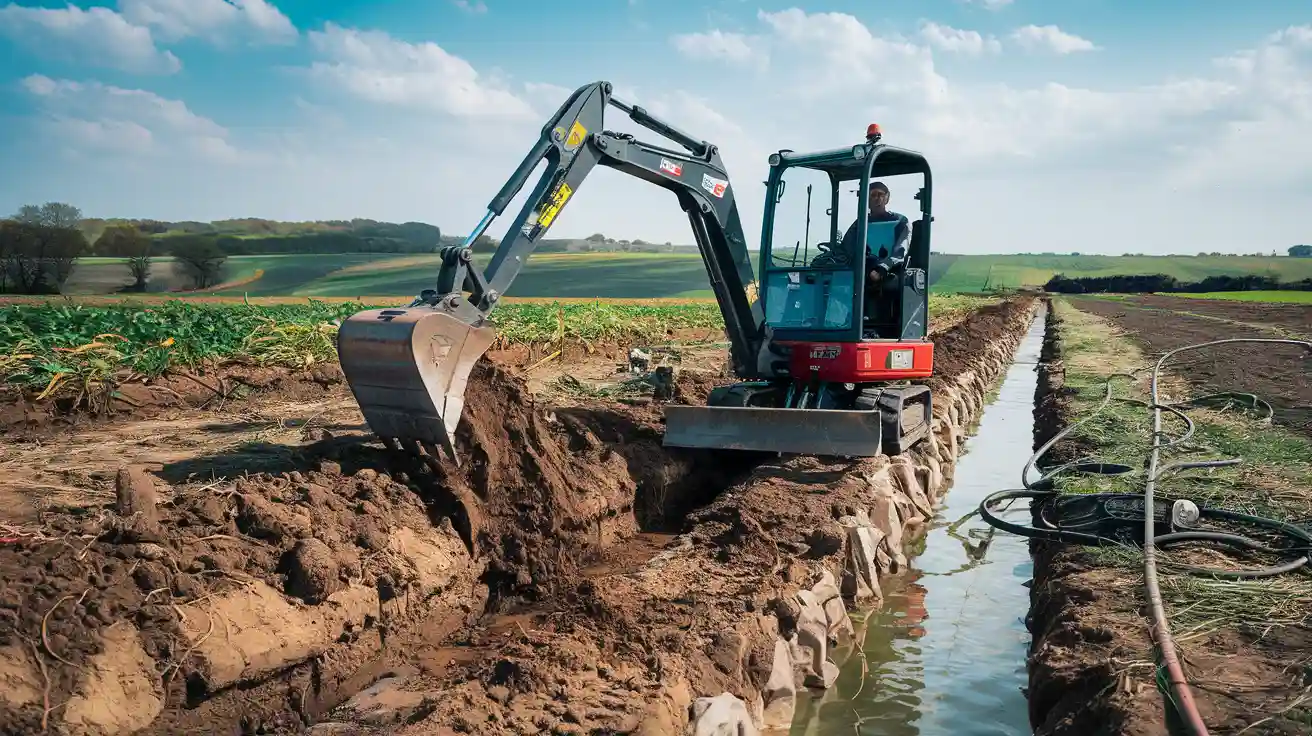
Inspection Checklist
Before you buy an excavator, check it closely. Use this table to help you inspect:
Item | What to Look For |
|---|---|
Leaks | Look for leaks near hoses, fittings, and seals. |
Undercarriage | Check tracks for damage or dry spots. |
Welds | Find cracks on parts that hold weight. |
Safety Structures | Make sure steps and ROPS are safe and not broken. |
Paint | Look for rust or scratches on the paint. |
Hinges and Latches | See if panels open and close without problems. |
Battery Terminals | Check for dirt or rust on battery ends. |
Hydraulic Cylinders | Look for oil leaks and hose damage. |
Fuel Cap | Make sure it closes tight and the strainer works. |
Fluid Levels | Check engine, hydraulic oil, and coolant levels. |
Cleanliness | Take out trash from the engine and radiator fins. |
Stickers | Make sure safety and EPA stickers are there. |
Wiring | Test the lights and look at the wires. |
Cold Check | Check oil and records when the engine is cold. |
Startup | Watch how the engine runs when you start it. |
Test the hydraulic system while working hard. Listen for weird sounds when you start the engine cold. Always look at maintenance records to see if the excavator was cared for. Focus on the engine, undercarriage, and main connection points. These parts show wear from tough jobs outside.
Test-Drive Tips
A test-drive shows how the excavator works. Follow these steps:
Start the engine and listen for strange sounds or smoke.
Lift something heavy to check balance and hydraulic power.
Move the boom, arm, and bucket to see if they work smoothly.
Try different attachments like buckets or hammers to test them.
Walk around the excavator after testing to look for leaks or damage.
See if the controls are easy and the engine reacts quickly.
You want an excavator that feels strong and accurate. DeepKron models have engines you can trust and controls that are simple. This helps you work safely and get more done.
Dealer Questions
Ask the dealer these important questions before you buy:
How long does the warranty last?
What does the warranty cover and what does it not cover?
How do you get help if something breaks?
Are labor and lost time covered?
Is it easy to get new parts like tracks or seals?
How much do common parts cost?
Does the dealer help you after you buy?
Check customer reviews and see if the dealer has good certifications. A good dealer helps you keep your excavator working and protects your money. When you compare mini excavators, look at DeepKron’s models for strong engines, good service, and long life.
To pick the best excavator, use these steps. First, look at the job site size and ground. Next, match what you need to lift and dig. Make sure the attachments work with your machine. Check how much fuel the excavator uses. Plan how you will move it from place to place.
A checklist helps you compare different choices. Mini excavators can do many jobs. They help you work faster and stay safe. If you want more help, check out DeepKron’s guides.
Benefit | Description |
|---|---|
Matches the machine to your project needs. | |
Cost Savings | Uses less fuel and needs fewer repairs. |
Safety | Makes the job site safer for everyone. |
FAQ
What size mini excavator should you choose for a small backyard project?
You should pick a model under 3,500 pounds. This size fits tight spaces and causes less ground damage. You can move it easily.
How often should you maintain your mini excavator?
You should check fluids and filters every day. Clean the machine after each use. Schedule full service every 250 hours.
Can you use different attachments with DeepKron mini excavators?
Yes! You can use buckets, augers, thumbs, and more. DeepKron models support many attachments for digging, lifting, and breaking tasks.

